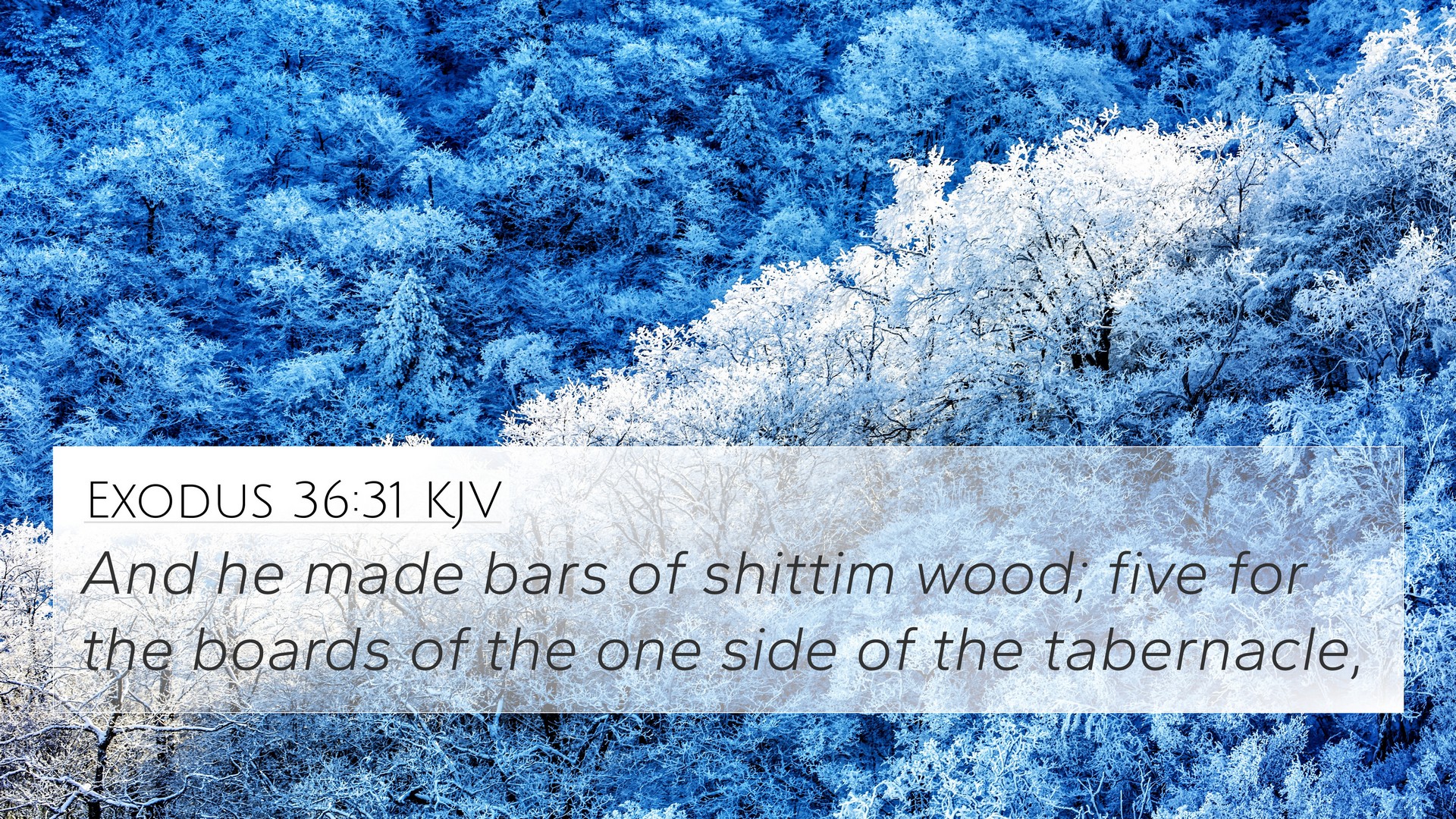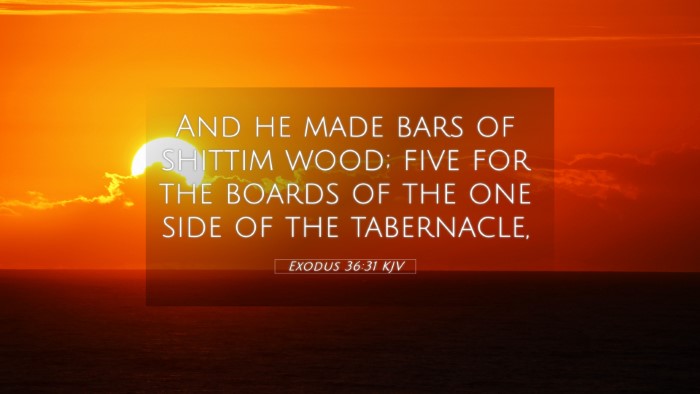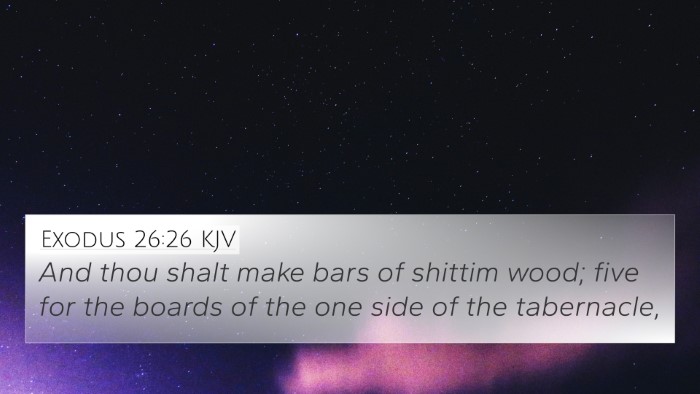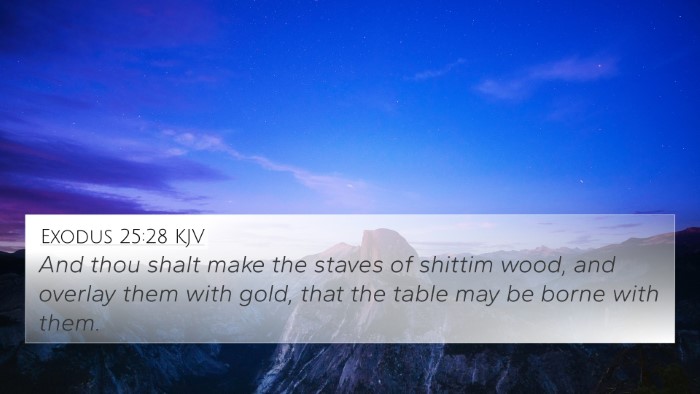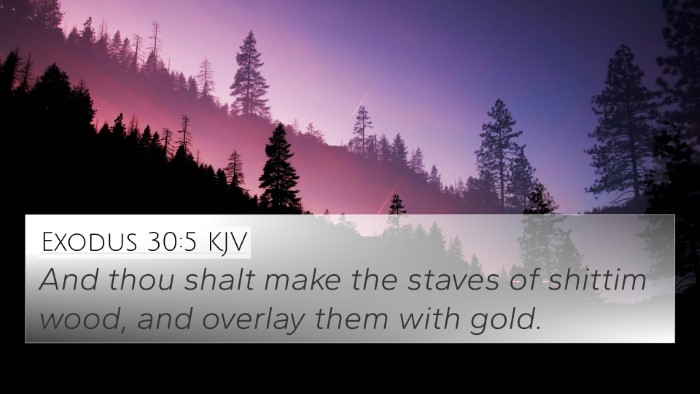Exodus 36:31 - Summary and Insight
In Exodus 36:31, we find a significant portion of the instruction given by God regarding the construction of the Tabernacle. This verse specifically addresses the making of the curtains, showcasing the intricate nature of the work required for the Tabernacle, which was the dwelling place of God among His people.
Contextual Background
The context of Exodus 36 centers around the preparations for the Tabernacle, where the Israelites, under the direction of Bezalel and Aholiab, are instructed on creating a holy space. The detailed instructions emphasize God's desire for beauty, order, and holiness in worship settings.
Key Themes and Interpretations
- The Importance of Detail: The construction of the Tabernacle was not merely functional but deeply symbolic, reflecting God's majesty and the sacred nature of worship.
- Divine Presence: The curtains represent God's protective barrier while also signifying His desire to dwell among His people. It outlines the connection between the heavenly and earthly realms.
- Community Involvement: The fact that skilled craftsmen were chosen indicates the importance of community collaboration in fulfilling divine commands, highlighting each person’s unique contributions.
- Symbolism of Colors and Materials: The materials used often carry deeper meanings—purple symbolizing royalty, blue the heavenly, and fine linen purity, serving as a reminder of God's nature.
- The Echoing of Heaven: The design of the Tabernacle, including its curtains, echoes the structure of things in heaven, illustrating a divine pattern that God established for earthly worship.
Cross-References and Thematic Connections
Exodus 36:31 connects with numerous other verses in the Scriptures, creating a rich tapestry of interpretation and understanding. Here are some relevant cross-references:
- Exodus 25:1-9: God's command to Moses regarding the offerings for the Tabernacle.
- Exodus 26:1: Instruction on the curtains of the Tabernacle, closely related to the specifics mentioned in 36:31.
- 1 Kings 6:1: The remembrance of the Tabernacle's significance during the construction of Solomon's Temple.
- Hebrews 9:11-12: The comparison of the earthly Tabernacle to the heavenly sanctuary, emphasizing Christ's role as the ultimate high priest.
- Matthew 27:51: The tearing of the curtain in the Temple, symbolizing access to God through Christ.
- Revelation 21:3: The final realization of God's dwelling with humanity in the New Jerusalem.
- Psalms 27:4: The desire to dwell in the house of the Lord, reflecting the longing for God's presence.
Tools for Further Study
For those looking to explore the connections between Bible verses, various tools exist to assist in this endeavor:
- Bible concordance: A helpful resource for finding words and their occurrences throughout the Scripture.
- Bible cross-reference guide: Tools designed to help readers find related verses.
- Cross-reference Bible study materials enable deeper understanding of themes and narratives.
- Cross-reference Bible study methods help in making sense of complex biblical themes.
Practical Application
Understanding Exodus 36:31 enhances one’s ability to grasp the significance of God’s instructions for worship and the sacredness of His dwelling. Applying this insight to personal worship allows believers to appreciate the depth of their relationship with God and the importance of community in worship settings.
Conclusion
This verse serves as a reminder of the intricate relationship between God and His people, the beauty of divine instruction, and the significance of worship. By leveraging cross-references and understanding the connections outlined in this verse, individuals can deepen their comprehension of biblical truths.
